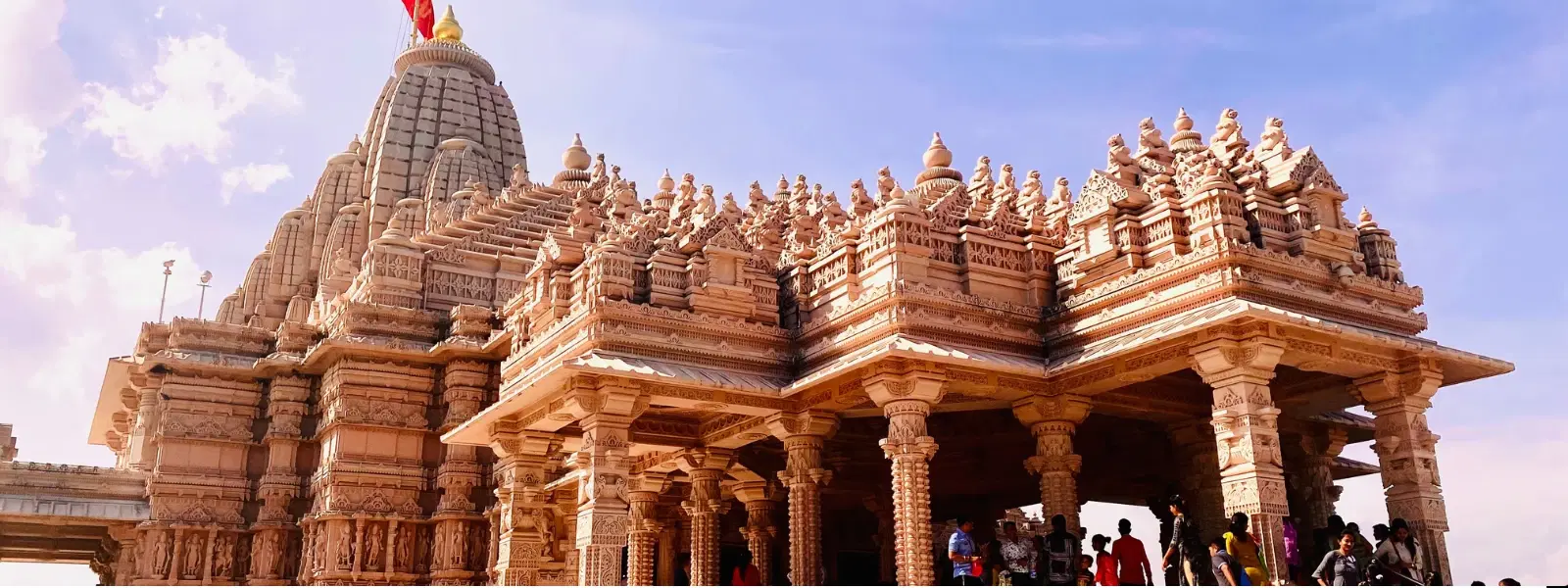
Hotels
•04 min read

Somnath Temple is a spiritual beacon that draws visitors from around the globe with its rich history, divine aura, and serene surroundings. Timing your visit to coincide with perfect weather and cultural celebrations can turn your journey into an unforgettable experience. In this guide, we explore the best months to visit Somnath Temple, taking into account the weather, seasonal festivities, and practical travel tips that can help you plan the ultimate trip.
The climate plays a significant role in enhancing the temple visit. Pleasant weather not only makes the darshan experience more comfortable but also allows for a relaxed exploration of surrounding attractions. Whether you are arriving for the morning aarti or planning an evening stroll on the beach, avoiding the extreme heat or sudden heavy rains ensures your experience remains tranquil and enjoyable.
Visitors can experience Somnath Temple during various seasons, each offering its own set of advantages. The peak season in winter (November to February) brings with it ideal weather and a festive atmosphere. The shoulder season, particularly during the monsoon months, offers a calm and refreshed environment, while the off-season in summer might see fewer crowds but advises travelers to brace for higher temperatures.
The winter months are considered the gold standard for a visit to Somnath Temple. The weather is mild, making the temple visit comfortable and enjoyable throughout the day. The air is crisp, and the cool breeze adds a refreshing element to the experience. During this season, festivals such as Maha Shivratri further enliven the area with religious fervor and vibrant celebrations. November through February, with each month offering distinct local flavors, ensures an enriching cultural experience along with the perfect opportunity for darshan.
Though the monsoon season is generally associated with heavy rains, the period from July to September brings a unique charm to the region surrounding Somnath Temple. The lush green landscapes and refreshed ambiance create a serene backdrop for spiritual reflection. Rain-washed surroundings add an ethereal quality to the temple environment, making it a peaceful retreat for those who can appreciate nature’s transformation during these months.

Each month holds its own distinct vibe and practical considerations for travelers. In November, the climate is still imbued with the fresh remnants of autumn, creating an inviting atmosphere. December and January provide a wintry delight with minimal humidity and cool temperatures, ideal for extended stays. February, with its mild conditions and cultural events like Maha Shivratri, stands out as an auspicious time for darshan. July, August, and September in the monsoon period bring a rejuvenating experience with fewer crowds and dramatically transformed landscapes, perfect for those seeking tranquility alongside spiritual solace.
Finding the right accommodation near Somnath Temple can elevate your entire visit. The area offers a wide range of lodging options, from budget-friendly inns to luxury hotels. Properties near the temple are often categorized by star ratings and unique amenities. Some hotels offer complimentary local transport, delightful local cuisines, and comfortable rooms that provide easy access to the temple and other nearby attractions.
When choosing your stay, consider your travel style. For families, hotels offering spacious rooms and kid-friendly activities are ideal. Solo travelers might prefer boutique accommodations that provide a quiet and personalized atmosphere. Budget travelers will find several affordable options that do not compromise on comfort or quality. With several online booking options available, planning accommodation near Somnath Temple has never been easier.
Pro Tip for a Memorable Visit
Did you know that the Maha Shivratri festival (usually in February or March) is one of the most auspicious times to visit Somnath Temple? While it attracts large crowds, the spiritual energy and cultural festivities make it an unforgettable experience.
To ensure a smooth and enriching visit, consider these practical tips. Opt for early morning or late evening darshan sessions when the temple is less crowded. Dress modestly and respectfully in line with temple traditions. Be mindful of local customs and follow the temple rules diligently. If you plan to visit during peak season, be prepared for larger crowds and slightly longer waiting times.

Advance planning can save time and enhance your overall experience. Always check the local weather forecast before your trip and consider booking your accommodation well in advance during peak seasons. Many visitors combine their Somnath Temple visit with nearby attractions such as the sacred city of Dwarka. This multi-destination journey can enrich your travel experience, providing both historical insight and natural beauty in one trip.
The best months to visit Somnath Temple are November through February for pleasant weather and July to September for a tranquil monsoon experience.
Winter (November to February) is ideal for visiting both Dwarka and Somnath because it offers comfortable weather and clear skies.
A 1-2 day trip is generally sufficient to explore Somnath Temple and its surrounding attractions, including the nearby beach and local markets.
Darshan timings typically range from 6:00 AM to 9:00 PM with three daily aartis that add to the spiritual ambiance of the temple.
Choosing the right time to plan your journey to Somnath Temple is the key to unlocking an experience filled with cultural vibrancy, stunning natural beauty, and spiritual enrichment. Whether you opt for the crisp comfort of winter or the refreshing calm of the monsoon, each season offers its own unique perspective on this sacred site. By carefully considering the weather conditions, seasonal festivals, and the availability of nearby accommodations, you can ensure that your trip is both comfortable and memorable. Thoughtful planning and accurate weather insights take much of the guesswork out of arranging your visit, allowing you to focus on the spiritual connection and cultural exploration that are at the heart of your journey.